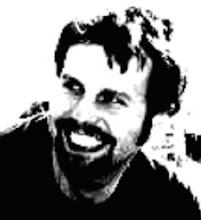 In 1996 Manuel Göttsching released The Private Tapes, a 6 CD compilation of Ash Ra Tempel, Ashra and solo recordings from the vault. This was released as a strictly limited edition of 1000 copies and sold out very quickly. Copies have been known to change hands on eBay for hundreds of euros. This short review focuses on The Best of the Private Tapes, a 2 CD set released in 1998.
In 1996 Manuel Göttsching released The Private Tapes, a 6 CD compilation of Ash Ra Tempel, Ashra and solo recordings from the vault. This was released as a strictly limited edition of 1000 copies and sold out very quickly. Copies have been known to change hands on eBay for hundreds of euros. This short review focuses on The Best of the Private Tapes, a 2 CD set released in 1998.The Best of the Private Tapes is book ended by two beautiful guitar pieces, Bois de Soleil and Bois de la Lune. These essentially use keyboards to create an atmospheric, almost ambient backdrop for some highly emotional lead guitar work. The former is the shorter and features a light guitar sound, the latter, heavier and moodier but the two pieces perfectly evoke the moods of sunrise and sunset. Halensee (excerpted here), Der Lauf der Giraffen and Whoopee are all low on fidelity but high on ideas. This trio of home demo quality sketches were experiments, recorded prior to the Starring Rosi album and present some fine guitar music. The first of these tracks is introspective, pensive and floaty, the second playful and the third is a slightly tense blues workout. In a similar vein, Ivresse de Soleil recorded in 1973 for a radio play is a warm, gentle guitar piece with folk elements.
Deep Distance and Lotus (both included in shortened form here) date from the Göttsching solo tour of late 1976 and are spacey workouts, using sequencer and the EKO Computerhythm, an early drum machine to accompany some light keyboards and intense guitar work. It is very interesting to hear a pre-album version of the latter.
Ain’t No Time for Tears, Ice Train, Phantasus and Club Cannibal are all recordings from a 1979 Ashra concert in Berlin and show Göttsching, accompanied by Lutz Ulbrich, Harald Grosskopf and Mickie Westphal in rocking mode. The first of these four tracks, (which never featured on a studio album) is a blistering latin rock workout and it is fascinating to hear the last three tracks (originally featured on the Correlations album) stripped of their meticulous, multi-layered studio production. Phantasus is noticeably different from the studio version with a harder edge and an ultra-tight, furiously funky version of Club Cannibal clocks in at almost fifteen minutes in length.
Fans of Ash Ra Tempel are bound to enjoy two extracts from Begleitmusik zu einem Hörspiel (Incidental Music for a Radio Play), recorded in 1974. Part five is reminiscent of Suche & Liebe from the Schwingungen album, featuring spacey vibraphones, amongst other instruments whilst part two charts deep space. A full 25 minute version of Begleitmusik can be found on part one of the full 6 CD Private Tapes set.
The Ash Ra Tempel track Gedanken (Thoughts) is exclusive to this 2 CD release and did not feature as a part of the full 6 CD collection. Recorded in 1972 this piece is haunting and dissonant with scratchy guitar sounds and shimmering cymbals.
One of the most striking things about The Best of the Private Tapes is the wealth of (then) unreleased material that Manuel recorded during 1978 and 1979. In addition to the two fine tracks that bookend this double CD collection, Ultramarine (excerpted) (1978) is a lovely, serene extended piece, largely based around two keyboard chords, distorted, yet melodic lead guitar and an oriental musical flavour. Whilst Hausaufgabe, recorded with Lutz Ulbrich in 1978 rumbles along satisfyingly with majestic, lead guitar on a bed of sequencer and EKO Computerhythm, Wall of Sound and Niemand lacht rückwarts (Nobody Laughs Backwards), two solo pieces recorded in 1979, are among the jewels in the crown of all of the Private Tapes recordings. The former uses a simple, delicate sequencer pattern as an ethereal base on which to layer multiple, echoing lead guitar parts with stunning results. The latter, (which was re-worked and resurrected for the 1997 Ashra tour dates) is a strong contender for the finest Private Tapes track of all. E2-E4 was just around the corner and this twelve-minute masterwork pre-dates techno just as much as that classic album with multiple sequencer patterns building up and weaving around one another to utterly mesmerizing, almost incandescent effect.
It is interesting to think that whilst Manuel was working on an eclectic mix of music with Ashra in the late ‘70s he could quite easily have released a classic solo album, predominantly featuring electronics and guitars. Having heard the Private Tapes, not to mention many of Manuel’s other archival releases fans could be forgiven for asking what other treasures are sat in his cupboard and when we will get a chance to hear them.













